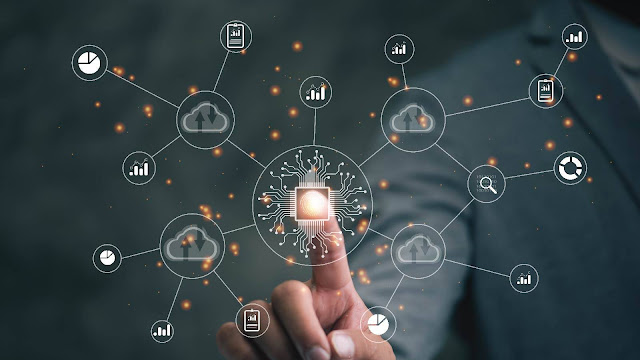Featured
- Get link
- X
- Other Apps
Transforming Your Smartphone into a PC: A Guide to Mobile Productivity

Introduction
The modern smartphone is a marvel of technology, packing
immense computing power into a compact device. But what if you could harness
that power for more than just calls, texts, and apps? Thanks to progressions in
technology, you can now turn your smartphone into a fully functional PC, unlocking
a new level of productivity and versatility. In this article, we'll explore the
steps and tools you need to transform your smartphone into a PC-like
experience.
The Rise of Smartphone-Powered Productivity
Smartphones have develop integral to our daily lives,
serving as communication tools, entertainment hubs, and even workstations. But
with the convergence of mobile and desktop computing, the concept of turning
your smartphone into a PC has gained traction. The ability to seamlessly switch
between mobile and desktop modes enhances productivity, making it easier to
work on documents, presentations, and other tasks without being tied to a
traditional computer.
Step 1: Choose Your Operating System
The first step in turning your smartphone into a PC-like
experience is selecting an operating system that supports this functionality.
Currently, two major players dominate this space:
Samsung DeX (Android): If you're an Android user with a
Samsung smartphone, you're in luck. Samsung DeX allows you to join your
smartphone to a monitor, keyboard, and mouse, essentially turning it into a
desktop experience. DeX provides a desktop-like interface with resizable
windows, taskbar, and multi-window support.
Microsoft Continuum (Windows): Windows 10 Mobile introduced
Continuum, a feature that enables certain Windows smartphones to connect to a
monitor, keyboard, and mouse. Continuum transforms the user interface into a
desktop-like experience, giving you the ability to run Universal Windows
Platform (UWP) apps in windowed mode.
Step 2: Gather the Necessary Accessories
To fully embrace the smartphone-to-PC transformation, you'll
need a few accessories:
Docking Station or Adapters: Both DeX and Continuum require
a docking station or specific adapters to connect your smartphone to a monitor.
These accessories ensure seamless connectivity and provide the necessary ports
for peripherals.
Monitor, Keyboard, and Mouse: Choose a monitor with suitable
screen size and resolution for your productivity needs. A wireless keyboard and
mouse will provide the desktop experience you're aiming for.
Cables and Chargers: Ensure you have the appropriate cables
and chargers to connect your smartphone to the docking station or adapters.
Reliable connections are essential for a smooth experience.
Step 3: Set Up and Configuration
Once you have the required accessories, follow these steps
to set up and configure your smartphone for the PC experience:
For Samsung DeX (Android):
Connect your smartphone to the docking station or adapter.
Your smartphone's screen should now appear on the monitor,
providing a desktop-like interface.
Customize the DeX settings, such as display resolution and
app preferences, to suit your needs.
You can use your smartphone as a touchpad or connect a
Bluetooth mouse for precise navigation.
For Microsoft Continuum (Windows):
Connect your Windows smartphone to the docking station or
adapter.
The Continuum interface will activate on the monitor,
resembling a desktop environment.
Open Universal Windows Platform (UWP) apps, which will run
in windowed mode, just like traditional desktop applications.
Utilize your smartphone's screen as a touchpad or connect a
Bluetooth mouse for enhanced control.
Step 4: Work and Play
With your smartphone seamlessly integrated into a
desktop-like environment, you can now enjoy enhanced productivity and
entertainment:
Productivity: Use office apps, browse the web, and manage
emails with the convenience of a larger screen and a physical keyboard.
Multitasking: Run multiple apps side by side, allowing you
to switch between tasks seamlessly.
Media Consumption: Enjoy movies, videos, and streaming
content on a larger display without sacrificing quality.
Presentations: Transform your smartphone into a presentation
tool by connecting it to a projector or larger screen.
Conclusion
The ability to turn your smartphone into a PC offers a new
level of flexibility and convenience. Whether you're on the go, working from
home, or simply looking for a way to multitask efficiently, this transformation
provides the best of both worlds. While it's essential to remember that the
smartphone-to-PC experience may not replace a full-fledged desktop or laptop
setup, it certainly offers a creative solution to bridge the gap among mobile
and desktop computing. So, grab your accessories, follow the steps outlined in
this guide, and unlock the potential of your smartphone as a powerful tool for
productivity and entertainment.
- Get link
- X
- Other Apps
Popular Posts
What are the Marketing Technologies Driving the Change? And, More
- Get link
- X
- Other Apps

Comments
Post a Comment